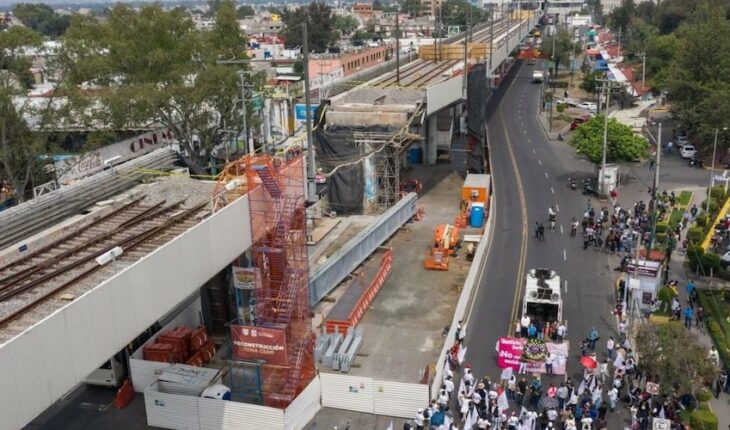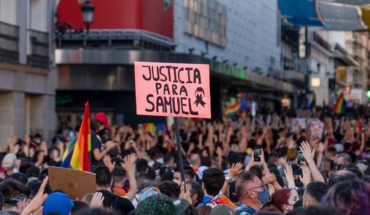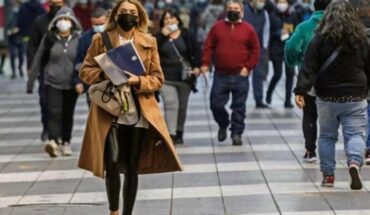On May 3, 2021, just the day when a part of the elevated viaduct of Line 12 of the Metro collapsed, the work of verification and monitoring of the behavior of the elevated section of the Gold Line, a service that the Mexico City Metro had contracted for 3.4 million pesos to the company Ingeniería, was scheduled to begin. Applied Services and Systems (ISSA).
This is the contract SDGM-GOM-IR-1-07/21 that the Metro signed on April 30, 2021, just three days before the tragedy that claimed the lives of 26 people and left 104 injured.
The document stipulated that the work, which was ordered by the General Subdirectorate of Metro Maintenance and was contemplated in the Annual Program of Public Works of the STC for 2021, should begin on May 3 and conclude on November 30, 2021.
In a review of the contracts made by the Metro, it was warned that this is not the first of its kind because in 2019 the agency paid 4.9 million pesos to the same company to carry out an identical supervision and monitoring of the elevated section of Line 12.
For 2020 the Metro confirmed that this service was not contracted because it is not an annual work.
On Monday, El País revealed the contents of the third report of the DNV company in which it is reported that the lack of maintenance and inspections of the Gold Line were a major factor in the collapse of the elevated viaduct.
At a press conference, the head of Government, Claudia Sheinbaum, confirmed that this information is contained in the third report of DNV and insisted that the maintenance logs are public on the transparency site enabled by the local administration, however, the records provided for citizens only contemplate the maintenance work to the roads carried out by the TSO firm.
However, as far as the maintenance of the structure is concerned, these logs and reports are not public.
In fact, on Monday afternoon and after Sheinbaum changed his mind and reported that he will release the content of the third report, a nine-page report attributed to DNV was leaked in which reference is made to the supervision and verification work of the elevated section done by ISSA in 2019, company that for this 2021 had been hired to carry out the same inspections.
“ISSA conducted preventive maintenance assessments and inspections in 2019, which included assessments of columns, column foundations, and soil conditions; however, they did not include analyses to identify deformations or damage to the structural steel elements, including the beams or cross frames (…) the failure to carry out inspections of the elevated section and comply with the inspection requirements of the maintenance manual is a root cause of the failure,” the report reveals.
“Maintenance may have failed, but it is not decisive”
In an interview with Political Animal, the former director of the Metro, Jorge Gaviño, defended the maintenance that was given to the Gold Line while he was in charge of the agency and explained that the logs or reports that must be public about the maintenance work that Line 12 of the Metro has received are those that have to do with predictive maintenance, that is, of those failures that were detected previously and intervened so that there were no major consequences.
As he explained, in most cases it is the structures themselves that “warn” that something is happening, for example, buckling or cracking and it is from there that intervention must be taken.
“Here there are two situations: if the structure was not warned, that is, if it was not buckled, if it was not cracked, if there are no cracks in the cement or arrows in the steel (…) and suddenly it falls is that it is not a matter of maintenance, but a matter of design, supervision and construction,” said Gaviño, currently a local deputy.
“Now, if you fall after the structure is cracked, which is warning, it is also an element of the predictive and had to be shored up.”
After the earthquake of September 19, 2017, he recalled, he received the notice of problems with two structures of Line 12: a column that lacked steel and had serious cracks, and that there was an arrow in curves 10 and 11 so it proceeded to shore up and close the service while the structure was intervened.
“If DNV says there was a lack of maintenance they have to prove – not with Google photographs – no, you have to say how many degrees, if it was foreseeable, if it was visible … all this you have to say to say (sic) that there was a lack of maintenance,” he stressed.
The 4 of May 2021, hours after the collapse of the elevated viaduct of Line 12, the then director of the Metro, Florencia Serranía, reported that the last revision that had been made to the line had been in January and that no anomaly had been detected.
“The last review of the infrastructure of the line and – as I informed you – was on January 20, we received the information from the monitoring of the entire elevated viaduct of Line 12, and it did not show any anomalies at that time; in June 2020, after the earthquake, a protocol review was made after earthquakes on Line 12 and the rest of the elevated viaducts of the Metro, which are on several lines,” he said on that occasion.
However, residents of the area had already denounced the conditions in which the collapsed section was specifically located.
Gaviño said to keep an eye on the full publication of the DNV report in which he points to the lack of maintenance as a factor that influenced the collapse of a section of the elevated viaduct, however, he affirmed that while he was in charge of the direction of the Metro of the City between July 2015 and May 2018 all the maintenance services that the gold line required.
“We suspended two or three times (Line 12 service) because there was a suspicion that there might be a structural failure. It stopped, checked, propped up and continued when we already had the security, but we never knew that there were design problems, construction and supervision problems, we never knew that,” said the former director of the Metro.
“The maintenance may have failed, but it is not decisive for it to have fallen,” he concluded.
What we do at Animal Político requires professional journalists, teamwork, dialogue with readers and something very important: independence. You can help us keep going. Be part of the team.
Subscribe to Animal Político, receive benefits and support free journalism.#YoSoyAnimal





